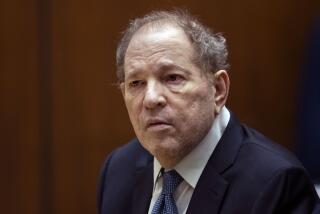The burning question in Washington state
When coal is mined in Montana, shipped out of Washington state and ultimately burned in China, who is responsible for the greenhouse gases?
That is the latest question challenging Washington state officials as they review plans for the first major coal export facility on the U.S. West Coast.
While the state is examining the impact of increased greenhouse gas emissions from truck and rail traffic to the proposed facility, environmental groups want them to go a big step further, arguing that slowing coal-based emissions in China starts with stopping coal shipments from U.S. shores.
No state or federal laws require officials to review the greenhouse gas effects that U.S. projects may produce on the other side of the world. But they ought to, say conservationists seeking to halt Millennium Bulk Logistics’ proposed facility on the Columbia River at Longview, Wash. They say efforts to shut down coal-fired power plants in this country are fruitless if American coal goes to power plants in China.
Montana Gov. Brian Schweitzer made an unusual appearance this week before the Board of Commissioners in Cowlitz County, Wash., where Montana and Wyoming coal producers hope to export 5.7 million tons a year, nearly all of it to booming economies in Asia.
Schweitzer’s visit to urge commissioners to approve the facility was triggered by the Washington Department of Ecology’s decision last month to intervene in the permitting process to ensure that the issue of domestic greenhouse gas emissions got full environmental scrutiny — an issue that could cause problems for a landlocked state like Montana.
“What I’ve come to find out is that some would like to consider, for any commodity that is shipped off the coast in Washington, the entire carbon footprint of that commodity before it’s loaded,” Schweitzer said in a telephone interview after his meeting with Washington Gov. Chris Gregoire. “This isn’t necessarily just about coal. And that catches my attention, because the wheat that we produce in Montana is also a thousand miles from the coast” and shipped along the Columbia River.
Commissioners later approved the facility, moving it forward for final state review in April.
Schweitzer made the point that Washington still burns plenty of Montana coal and also imports electricity generated at coal-fired power plants in Montana.
“At every street corner, they’ve got a Starbucks coffee or a Seattle’s Best, and they’re drinking all that hot coffee and talking about how bad that coal is,” Schweitzer, a Democrat, told the Billings Gazette. “All the while, that coffee was heated with coal electricity that was burned in Colstrip, [Montana] and put in wires and sent to all four corners of that intersection in Seattle for 40 years. That’s a fine how-do-you-do.”
Washington state and local officials are debating a relatively narrow definition of how greenhouse gases associated with the project are to be studied.
Cowlitz County examined potential increased emissions as a result of rail and truck traffic in a narrow band around the proposed facility. The Department of Ecology intervention is intended to determine whether those emissions should be studied across a broader geographic swath.
So far, the state is not factoring in China’s burning of the coal in its review. Schweitzer said shipping Montana’s relatively clean coal to China could have a net positive effect on global emissions compared with what Asian plants might produce burning coal from other sources.
“On that basis, Montana coal would compare very favorably,” he said. “But if you have to compare our carbon footprint to what the carbon footprint of man was before hydrocarbons, I think it’s going to change the way we produce and consume everything.”
Cowlitz County officials said project proponents agreed on a list of 51 environmental mitigation measures, many of them aimed at countering local concerns about coal dust.
“We had our lawyers sitting right next to us. Our room was full of people; we accepted four hours of testimony. I encouraged them to discuss the permit itself, but they basically talked about the philosophy around the world of burning coal,” said George Raiter, chairman of the commissioners.
Sandra Davis, a Longview resident who testified at Wednesday’s meeting between Schweitzer and the commissioners, said people were concerned about the health impact in an already industrialized region that is seeing higher-than-normal rates of cancer.
“I don’t know whether you’ve ever seen a picture of what these kinds of facilities look like. It’s mounds and mounds, 40 feet high of coal,” she said. “I understand they’re not going to burn coal here, but we will be left with the contamination from that site, and we will not be able to accommodate these coal trains.”
Joseph A. Cannon, Millennium’s chief executive, said exporting coal would result in no net increase in greenhouse gas emissions in Washington state.
But KC Golden, policy director in Seattle at the nonprofit group Climate Solutions, said a broader review was in order.
“We are really at a huge economic crossroads, and we believe a moral crossroads, in terms of the relationship of our state to this global problem,” he said. “Washington is making a choice about whether to become a resource colony for Asian economies, or whether we’re going to continue on the path we’ve begun, which is to transition to a clean-energy economy.”
More to Read
Start your day right
Sign up for Essential California for news, features and recommendations from the L.A. Times and beyond in your inbox six days a week.
You may occasionally receive promotional content from the Los Angeles Times.






